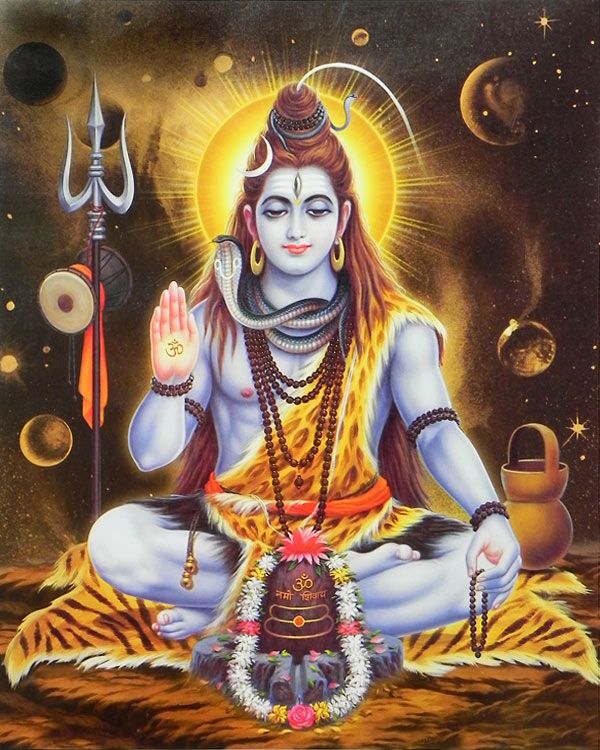 Shiva, who emerged from limitless pillar of fuel-less fire, is visualized sitting under the Pole Star, on a snow-capped mountain, in the shade of a banyan tree.
Shiva, who emerged from limitless pillar of fuel-less fire, is visualized sitting under the Pole Star, on a snow-capped mountain, in the shade of a banyan tree.
Shiva’s holy city, Kashi, is located at a bend in the river Ganga where it turns and moves northwards instead of southwards. This reverse flow of the river is a reminder of what the human mind can do. Only the human mind, blessed with imagination, can challenge the laws of nature, withdraw from it and even break free from it.
Shiva reveals the power of the higher brain over the lower brain, the human brain over the animal brain. That is why he is called Pashu-Pati, master of animal instincts. He offers the promise of a-bhaya, the world where there is no fear of scarcity or predator, in other words no fear of death.
The third eye of Shiva indicates transcendental wisdom.
In a Shiva temple, the devotee moves from northeast to northwest and northwest to northeast, always traversing the south but never the north, a reminder that to reach Pashu-Pati one has to live in the realm of Praja-Pati.
Shiva does not seek to defy or deny the value of cultural rules, rites and rituals. He is simply ignorant of them. He is not a rebel; he is simple and pure.
Parvati insisted that Shiva comes to her house like a groom and asks her father for her hand in marriage. Unlike normal grooms who come on a mare, Shiva came on a bull. Instead of being draped in fine cloth and sandal paste, he came wrapped in animal hide and smeared with ash…
Shiva once told Parvati, “It is not what I am offered. It is the emotion that accompanies it that matters to me.”
– Devdutt Pattanaik, 7 Secrets of Shiva, (Westland, 2011).
You must be logged in to post a comment.